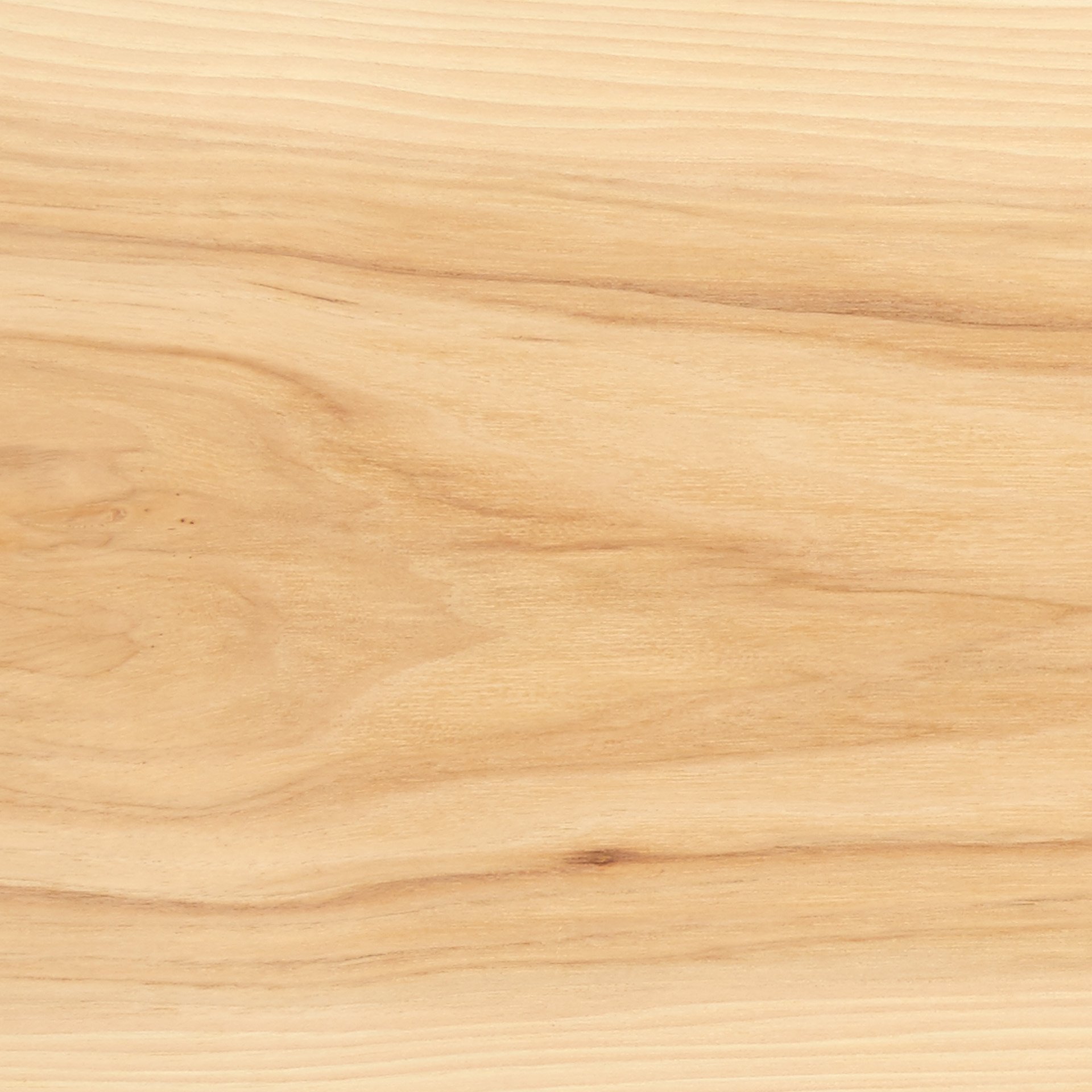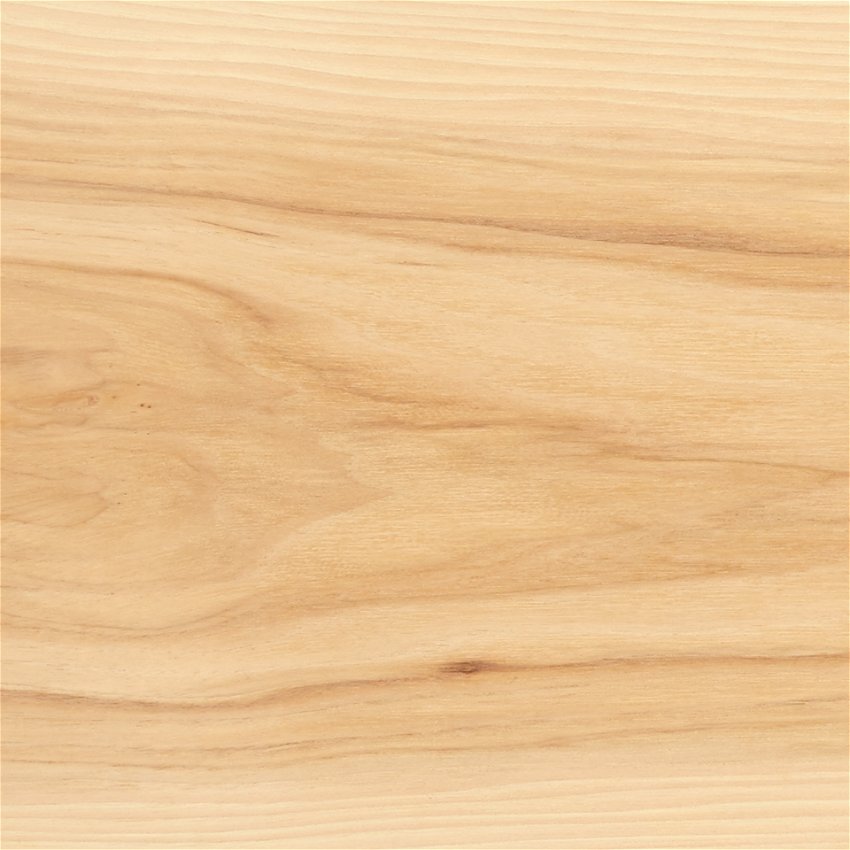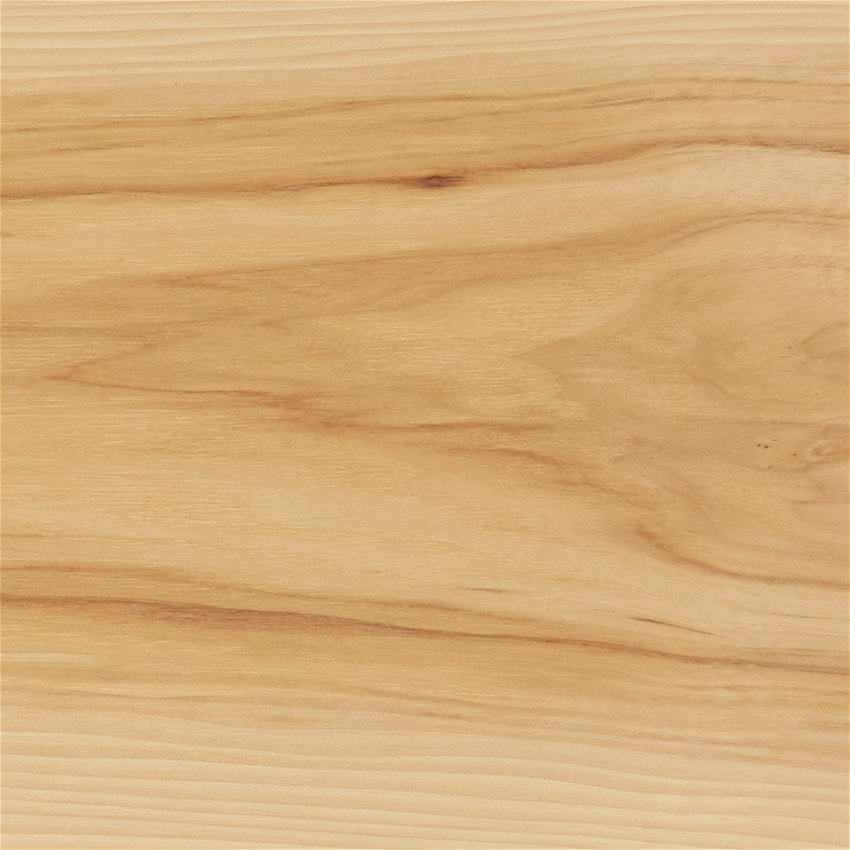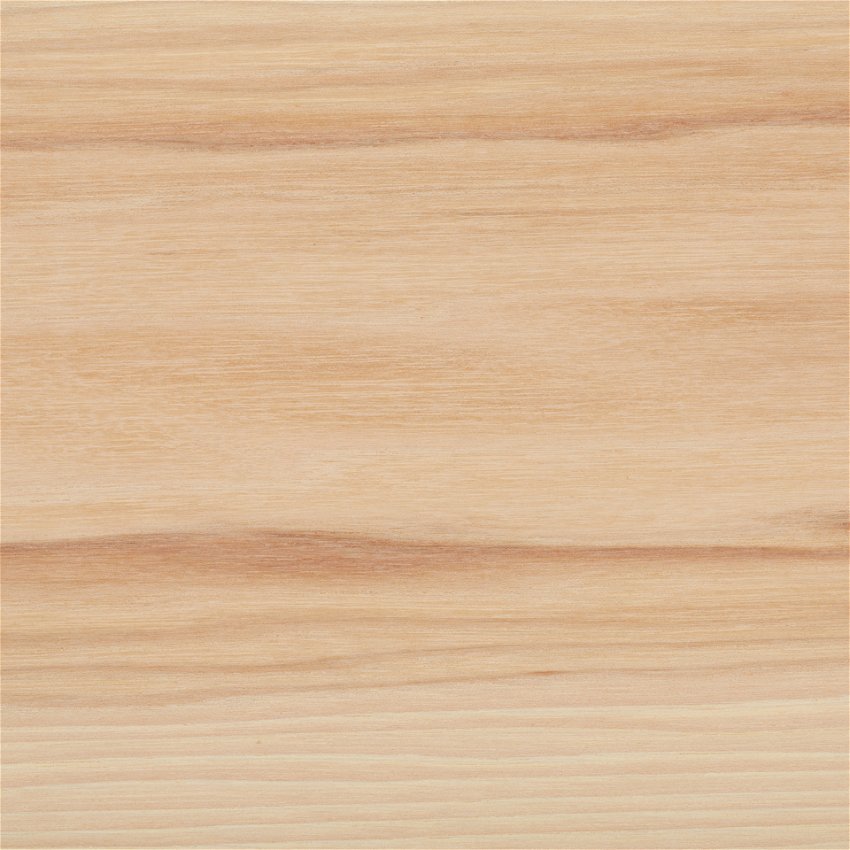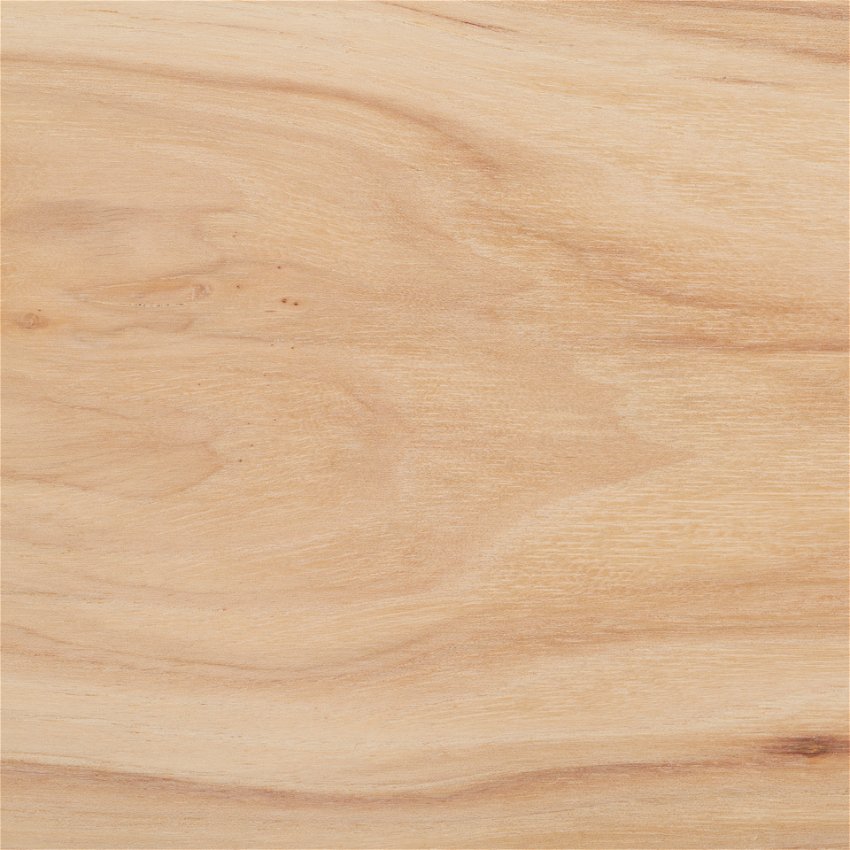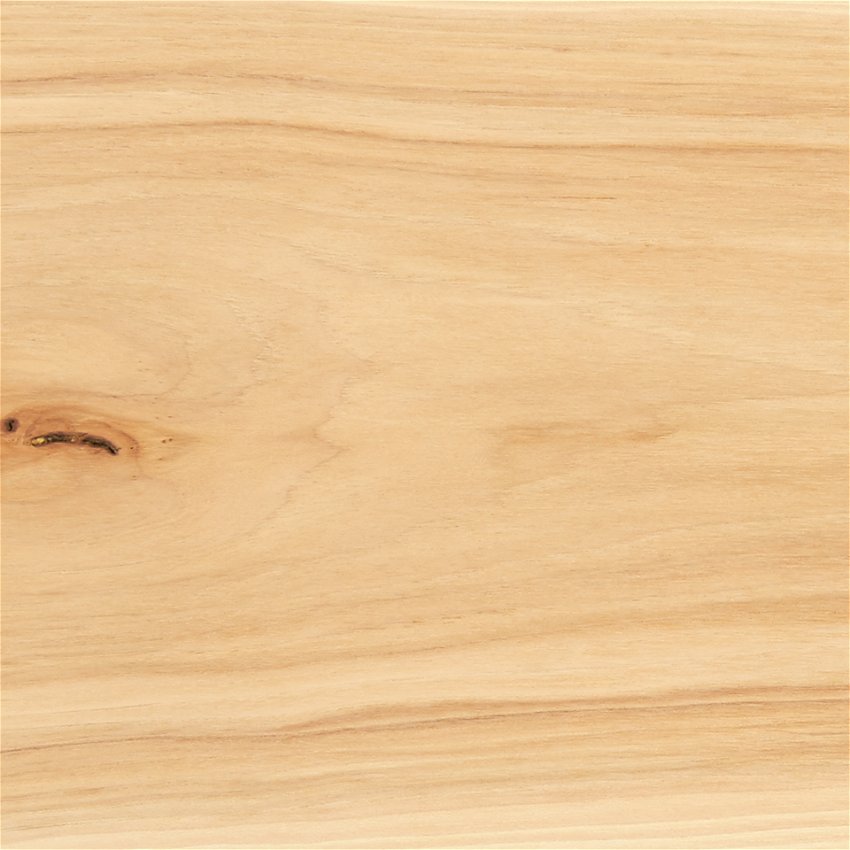American Hickory
Overview
American hickory and pecan are different species of a very diverse group, but in the round (log) they are virtually indistinguishable from each other and therefore often processed by saw mills and sold mixed together. The hickories are an important group and the trees grow naturally throughout the Eastern U.S., from north to south. They are split into two groups; the more important true hickories and hickories producing pecan nuts, the latter being an important fruit-bearing tree. Trees vary in size enormously.
The wood of hickory varies greatly in color, grain pattern and appearance from this very diverse group. It is fine textured and the grain is usually straight but can be wavy or irregular. The sapwood is white and maybe tinged with brown, while the heartwood is pale to yellow brown to dark in color. Deep purple mineral streaks are a natural characteristic. Bird pecks are also a common characteristic and neither is considered a defect.
Furniture, cabinetry, ladders, striking tool handles dowels and sporting goods. The hardwearing properties of hickory make it an excellent choice for flooring, especially in situations of high traffic use. Historically the first wooden golf club shafts were made from hickory, and NHLA lumber graders still use the traditional flexible hickory measuring stick.

